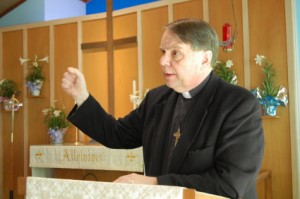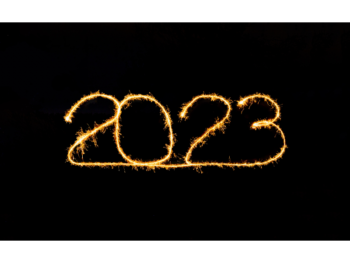
Sustainability professionals these days regularly find themselves preaching to the choir. As with the development of any new frontier, the leading edge of innovators can initially be so thrilled to find a few like-minded thinkers that they seek each other out, attend the same conferences, join the same LinkedIn discussion groups and generally find themselves in a comfort zone. I must admit that I am one who has experienced the too-comfortable zone. The thing is, if we aren’t careful, we will create an exclusive and unproductive club rather than collectively forward a movement. Not good. As the Bainbridge Graduate Institute’s Gifford Pinchot III put it, while moderating a recent Seattle City Club conversation on the triple bottom line, we can easily preach to the sustainability choir, and we can probably leave the tone deaf alone. But, what can we do to reach those who don’t realize they are humming along to the tune?
Jim Hanna, Starbucks Director of Environmental Affairs, referred to reaching past the choir several times during the evening’s discussion, but he framed the problem within the context of the good old bell curve. From what he sees while out and about doing his job, collaborating with other coffee industry players and speaking at conferences, there’s a real need to focus on the middle of that curve in corporate sustainability adoption. Jim asks how we can educate and persuade the next cohort of corporations to invest and commit to planet and people as well as profits? What stories can we tell, and how can we tell them in ways that will really reach still-resistant business minds?
One company that has been very successful telling its stories, and shifting the thinking of competitors and other industries alike, is Patagonia. Vincent Stanley, that company’s Acting Vice President of Marketing and co-author with Yvon Chouinard of The Responsible Company was on the Seattle panel. And, while making sure to point out that Patagonia is by no means perfect with regard to sustainability, Stanley noted that they learned early on that as long as they really talked with customers, and took that risk, they could pursue new, more responsible ways of doing business. And, they’ve done it again and again. Along the way, by forcing the issues and considering alternative approaches, they’ve learned a ton about their business.
Reach past the choir: Tell accessible “learning from the journey and succeeding” stories like Patagonia’s.
In addition to stories of external success and reaching customers, there’re also the powerful stories of retention and recruitment that come out of corporations like Starbucks and McKinstry (represented on the Seattle panel by their Executive Vice President, David Allen). The most powerful ways to move sustainability through a company are by leveraging the internal drivers. Having employees engaged with and excited by sustainability is key to Starbucks’ success in finding the best, according to Hanna. Allen, as well, has no doubt that McKinstry employees stay loyal and are easier to recruit because of their sustainable practices. By focusing on and integrating sustainability throughout their business, across functions, each employee feels they are a part of something bigger.
Reach past the choir: Counter industry norms and talk about your successes.
And then there’s the exciting story of the Bullitt family owned Sleeping Lady Mountain Resort, perhaps less recognized outside of the Pacific Northwest, but doing incredible behind-the-scenes work to influence the entire hospitality sector. General Manager, Paula Helsel told the Seattle audience how that resort had proved a point by countering the norms. For example, though hospitality peers warned them away from buying local produce as too expensive and not worth the effort, the lack of Cisco trucks unloading every day has resulted in a smaller carbon footprint and has delighted restaurant guests with fresh offerings. And, just as the guests and local community respond to the various sustainability-related efforts of Sleeping Lady, so does the hospitality industry. Sleeping Lady regularly gets involved in educating others by sharing their experiences.
To mix metaphors: if the middle bell curve corporations could hear the above examples in full, would they be convinced to turn their casual humming into full-on choir singing?
Two more points came up during the City Club discussion that, if tended to, could make a big difference in reaching those not yet in the sustainability choir. They include:
1. Business school integration. Whole system strategies, the type that deliver on the triple bottom line’s people, planet and profit goals, comes when the leadership pipeline brings that sort of thinking to its future corporate employers. An MBA program class or two on “sustainable business” or “corporate responsibility” is not enough. Sustainability must be integrated and taught across functions, to accounting, finance, marketing and operations specialists alike. And, as someone who has done the research and founded the first school to offer just such a Sustainable MBA, Bainbridge Graduate Institute’s (BGI) Gifford Pinchot III knows this to be true. Like Sleeping Lady’s Helsel, he is now regularly consulting within his industry. Business schools across the country are seeking the help of BGI on how to integrate the sustainable approach that many of their students and the smartest of employers are demanding.
2. Digital transparency. With so much potential for spreading sustainability successes and practices, as well as the potential for tripping up the businesses that are not being transparent, Starbucks’ Hanna sees social media as a game changer. A fair number of big corporations are being forced into the transparency they’ve never faced before. BP Oil is but one example of a corporation very publicly called out for the Gulf of Mexico oil spill and their lack of responsibility in preventing it or cleaning it up. There are now many more examples of consumers and industry influencers demanding the truth, through both immediate and longer-term social methods. These social-empowered people are absolutely changing corporate behavior in the process. (See my Storify of the recent SXSW #ageofdamage session which was led by David Jones of Havas. The tweets, links and examples all tell the story of how corporations have had to learn, and fast.)
Today, there are some incredible examples of corporations setting the sustainability and triple bottom line bar. And, their employees have stories to tell of their engagement and loyalty. There are also inspiring and passionate corporate leaders who are dedicated to the movement and giving of their time to spread their knowledge. To reach past the choir members and connect with the middle of that sustainability integration bell curve, our charge is to write those stories, share other links that tell those stories, and help “arm” anyone we know heading into or connected with a business school with the tools they need to persuade and change.
I am co-presenting a Seattle GoGreen Conference lab session (April 24) on a similar topic if you’d like to bring your questions about how your business can contribute to the cause, and soon!




